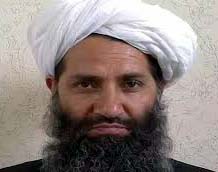ISLAMABAD: As the American drones have stepped up attacks against the Pakistani militants operating from Afghanistan, Commander Mangal Bagh Afridi, the fugitive ameer of a Taliban-linked Islamic militia – Lashkar-e-Islam – has reportedly been killed in Nangarhar.
The Pakistan government had placed a bounty of Rs20 million on the head of Mangal Bagh, a bus driver turned jehadi, who had fled to Afghanistan along with his 500-plus associates after the launch of a military operation in the Khyber Agency of Pakistan’s Federally Administered Tribal Areas. Like many other Pakistani Taliban commanders, his militia also operates from Nangarhar and carries out cross border attacks against the Pakistani security forces. Mangal had sustained serious injuries when a US drone struck a compound in the mountainous Bandar Khudi Khola area in the Nangarhar province of Afghanistan on July 23. He was provided medical assistance, but could succumb to his injuries and expired 24 hours later. However, while the Pakistani intelligence circles are sure about Mangal Bagh’s death, the Lashkar-e-Islam has not yet confirmed the reports of his demise.
Mangal’s reported killing in a drone attack comes just a few days after a key TTP commander, Khalifa Omar Mansoor, who had masterminded the 2014 Army Public School attack in Peshawar, was killed in a similar attack by a drone in Nangarhar. The Pakistani authorities have long wondered why the CIA-run drones do not target those Pakistani Taliban leaders who are using the Afghan soil to stage terrorist attacks even while they keep targeting al-Qaeda and Afghan Taliban leaders inside the Pakistani territory. Pakistan had reacted strongly to the droning of the ameer of the Afghan Taliban, Mullah Akhtar Mansoor, in May 2016 in Quetta. Pakistan had even raised the issue at the United Nations Security Council, describing it as an unacceptable and blatant violation of the country’s sovereignty and of the United Nation’s charter and international law. On May 25, Army Chief General Sharif had told US Ambassador to Pakistan David Hale that the US should desist from taking unilateral actions that undermine mutual trust.
However, there is no reaction from the Pakistani side so far following the killings of Omar Mansoor and Mangal Bagh, which show that the drones are now focusing on the elimination of the anti-Pakistan Taliban leaders operating from Afghanistan. According to a report released by the White House on July 1, 2016, the American drones killed only 64 to 116 civilians in 473 strikes launched between January 20, 2009 and December 31, 2015. The drone strikes also killed 2,372 to 2,581 combatants during this period, the White House report added. The report, however, did not reveal much about the strikes themselves or the people who were killed. Most of the drone strikes in Pakistan are conducted by the American CIA, which does not disclose details of its operations. But Pakistan may use these incidents to demand more loudly from the US to go after the fugitive TTP ameer Mullah Fazlullah who, like commanders Mangal Bagh, Omar Mansoor and Umar Khurasani, fled to Afghanistan because of Pakistani military operation launched in June 2014.
Fazlullah is based in the Kunar province of Afghanistan, and the Afghan government is allegedly turning a blind eye to his anti-Pakistan activities. Mangal Bagh, like Mullah Fazlullah, made his name by running a popular illegal FM Radio channel – ‘Da Haq Awaz’ or the ‘Voice of the Right’. He used his radio channel to propagate his venomous ideology against the Pakistani security forces and hurl threats at tribal elders who were siding with the security forces. He had declared war on Pakistani state and still commanded a large following that he could have activated any time. As such, his death will be marked as another blow in the fight against Islamic militancy. But security analysts believe that his killing will in itself not do much to reduce terrorism in the region. In fact, Mangal’s Lashkar-e-Islam had ceased operations in the Khyber Agency when most of its fighters fled to Afghanistan after the launch of Army’s Operation Zarb-e-Azab in North Waziristan.
Mangal Bagh was one of the more enigmatic Islamic warlords to emerge from the Pakistani tribal belt adjoining Afghanistan, before becoming the new face of extremism in the Khyber Agency. Hardly a few years ago, he used to be the only power stopping the Pakistani Taliban from swooping in to cut off vital Nato supply routes to neighbouring Afghanistan. The Khyber agency, which is part of Pakistan’s tribal belt, happens to be the lifeline for Nato forces in Afghanistan. Lorry loads of food, equipment and fuel wind through the Khyber Pass daily to the bustling border at Torkham. Mangal’s former stronghold, the market town of Bara, is just a half hour drive from Peshawar, the capital of the Khyber Pakhtunkhwa. Therefore, the Pakistani authorities used to rely on his influence to ensure a smooth supply [via Torkham] of the goods for the Nato forces from Pakistan to Afghanistan.
The Pakistani authorities feared if they would finish Mangal, the Taliban would come in. Hence, the Pakistani state had literally withdrawn from the Bara area and much of the Khyber Agency and given a free hand to Mangal Bagh. As a result, the Lashkar-e-Islam militants used to act as the de facto police, driving around in four-wheel-drive vehicles that even had a blue flashing light. However, all this changed a couple of years ago when the military launched a massive operation clean-up [in June 2014] in North Waziristan and Mangal decided to provide shelter to the fleeing TTP leaders and militants in Khyber Agency. This prompted the Pakistan Army to first launch Operation Khyber I in the Bara area and then Operation Khyber II in the Tirah Valley of the Khyber Agency. In March 2015, Mangal formally merged his Lashkar-e-Islam into Tehrik-e-Taliban Pakistan, after the killing of his younger son, Israfeel, at the hands of the security forces. He was subsequently appointed the supreme commander of the Tehrik-e-Taliban Pakistan for the Khyber Agency by the then TTP ameer Commander Hakeemullah Mehsud.
As things stand, the Pakistan army has successfully cleared the Khyber Agency of the private army of Mangal Bagh, although it had to pay a heavy price in terms of casualties – over 50 dead soldiers and over 100 injured. However, questions remained whether the military gains in the plains of Bara area and upper reaches of Tirah Valley could be sustained over a long period in the absence of administrative and auxiliary support systems. “It was not easy,” a senior security official told this scribe. “The area was heavily mined. There were mines every 15 metres. The mining was done professionally. In one single fight for the control of Khyber Sanghar, called the Kidney Ridge by the military due to its shape, the military lost 11 soldiers, including a major. “It was tough,” the security official added.
In fact, 95 per cent of Khyber agency is under firm government control and the militants hiding in the remaining pockets of Kachkol and Rajgal are being targeted through precision aerial strikes. But it is still unclear whether the military will launch the third and final phase of Operation Khyber to seize control of Rajgal and Kachkol valleys or continue to target militants and their hideouts through aerial strikes till winters in the snow-bound area to make it inhabitable for them. However, Mangal’s killing is a good news for the Pakistani security forces which believe his eradication would encourage more and more Lashkar-e-Islam fighters to surrender and lay down arms. Hundreds of his fighters had surrendered and laid down arms when the Army launched operations in the Khyber Agency.
However, most of Mangal’s fighters are not ready to surrender, hoping against hopes that their commander is still alive, given the fact that he had resurfaced [a year later] the last time he was reported dead in March 2012. The Peshawar Police chief had claimed on March 18, 2012 that the most wanted Haji Mangal Bagh Afridi has been killed in a shootout with the law enforcement agencies. But Mohammad Hussain, the spokesman for the Lashkar-e-Islam, had refuted the reports of his killings, saying that he is alive and well. But the security forces, while citing his absence from the scene, kept insisting he was dead. The news of his death hit the headlines upon the conclusion of a six-day-long clean-up operation [between March 12 and March 18, 2012] by the Pakistani security forces in the Tirah Valley. But a year later, the establishment discovered in March 2013 that Bagh was not only alive but was already fighting against the Pakistani security forces in the Tirah Valley.
Nonetheless, the Pakistani security agencies are confident that Mangal has finally been killed and his elimination would come as another major blow in the ongoing fight against militancy.





